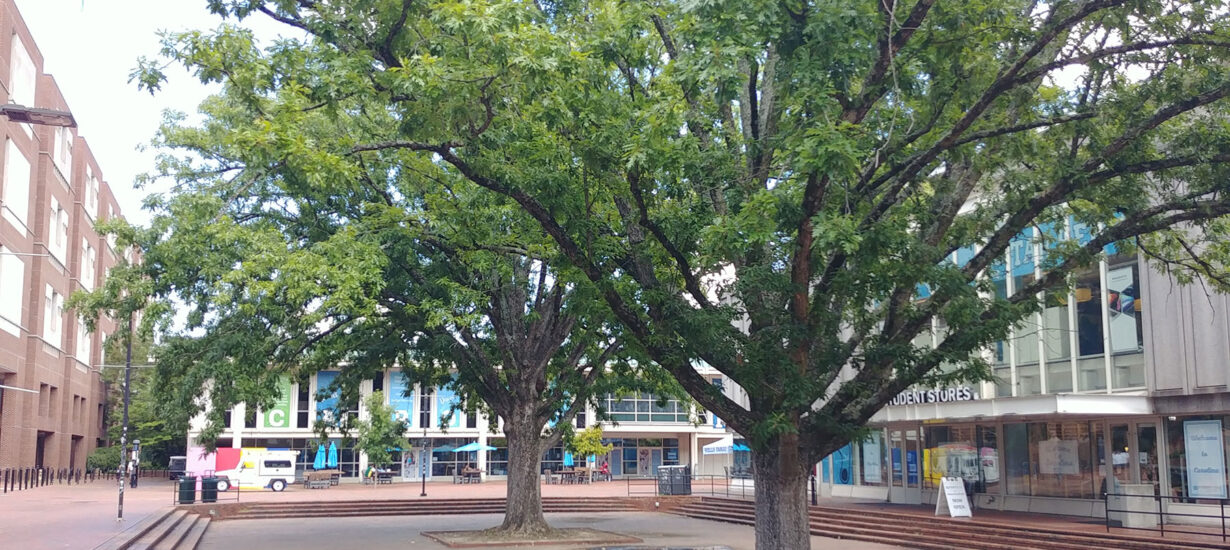University to Erect Memorial to Cates, Killed in 1970

A permanent memorial honoring James Lewis Cates Jr., a Black man who was stabbed to death 52 years ago in a racially motivated attack outside the Frank Porter Graham Student Union, is planned to be installed this year in the Pit.
Cates, 22, a Chapel Hill resident, was on campus Nov. 21, 1970, for a Homecoming weekend dance at the Student Union. A fight broke out among students, community residents attending the dance and members of a motorcycle gang. Cates was stabbed and bled for up to 45 minutes in the Pit before being transported to nearby N.C. Memorial Hospital, according to newspaper reports. Cates was not a Carolina student.
“Our work to be a more diverse and inclusive University takes time, and I appreciate our community’s devotion to these efforts,” Chancellor Kevin Guskiewicz said in a statement about the memorial, which was developed in partnership with the Cates’ family, with input from students, faculty and staff. He said he was pleased the University could announce the plans for the memorial, which the UNC Board of Trustees approved, before the fall semester began.
Cates was killed in the early morning hours outside a dance that was scheduled from midnight to 7 a.m. and was co-sponsored by UNC’s Afro-American Awareness Committee and Carolina Union to promote racial diversity. In 1970, Black students comprised less than 2 percent of Carolina’s student body.
Three members of the motorcycle gang were charged with murder in Cates’ death but acquitted in a trial in Orange County four months later.
Cates lived on the west side of Chapel Hill in the Northside community, which was home to many of the University’s service staff. Police said he died “a victim of racial violence.”
The day after Cates died, some community residents marched to the home of then-UNC System President William Friday ’48 (LLB) demanding an investigation. Friday asked then-Chancellor J. Carlyle Sitterson ’31 (’32 MA, ’37 PhD) to look into the murder, and administrators later questioned witnesses and produced a memo summarizing the events.
For decades, members of Cates’ family and the community have sought answers about his death and asked University officials to acknowledge the attack and tell his story. Mike Ogle ’02, an independent journalist and a contributing writer to the Carolina Alumni Review, is credited with helping to keep the story alive and pushing University leaders not to forget Cates’ death.
In 2020, on the 50th anniversary of the attack, Guskiewicz and Chapel Hill Mayor Pam Hemminger announced in separate messages that a committee of UNC researchers, Cates family members, Chapel Hill officials and others would look into the 1970 events. “Most people on our campus and in our community do not know this story, and this needs to change,” Guskiewicz said that day. “This is an opportunity to finally tell the full and complete story of this horrific event, with the guidance of the Cates family.”
That same day, community members marched from the Hargraves Center in Northside to the church where Cates’ funeral was held and then to Peace and Justice Plaza on Franklin Street — just as marchers had done in 1971 and 1973.
Earlier this year, the FBI opened an investigation into the murder under a 2007 law that grants the bureau authority to investigate unsolved racially motivated murders committed through 1980.
Guskiewicz said in his statement that the memorial is another step in the Build Our Community Together, the first initiative in the University’s strategic plan, Carolina Next: Innovations for the Public Good. It follows other key diversity milestones from the past year, including renaming campus buildings for Hortense K. McClinton, Carolina’s first Black professor, and Henry Owl, the University’s first American Indian student, as well as opening a new Asian American Center on Cameron Avenue.
The Cates family released a statement saying they were pleased to learn the University plans to recognize their brother and cousin with a memorial. “Similar to our sentiments about the cold-case investigation that the U.S. Department of Justice opened this year, we are grateful for this development while also acknowledging our heartbreak that it has taken more than fifty years to get here,” the statement read, which was signed by Mary Lee Campbell; Nate Davis, retired director of the Hargraves Community Center; and Valerie Foushee ’78, a three-term state senator from Orange County and Cates’ cousin.
Guskiewicz said details about the memorial will be announced later.
– Laurie D. Willis ’86
